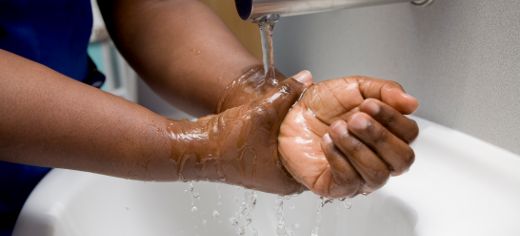
Hospital room designs make a significant difference to the likelihood of bugs being spread through person-to-person contact between medics and patients, according to University of Leeds research.
The risk of healthcare workers getting their hands contaminated and passing on infections was significantly higher in multi-bed wards than settings with single-bed rooms, even with the same levels of hand hygiene.
Professor Cath Noakes, who led the study by the Institute of Public Health and Environmental Engineering in the University of Leeds' School of Civil Engineering, said: “We found the multi-bed wards posed a greater risk because there was a higher likelihood that surfaces would be contaminated, even in areas that were quite a distance from already infected patients, and that these would be passed onto medics’ hands.”
Professor Noakes added: “The message is that hand washing and cleaning is hugely important in all hospital wards, but that it is even more critical in multi-bed wards where infectious particles may be present on surfaces that medics may not expect to be contaminated.”
The study, published in the journal Indoor Air, is being publicised to coincide with the World Health Organisation’s international hand hygiene day on 5 May 2015.
Researcher Dr Marco-Felipe King, who carried out the study as part of his PhD, used computational fluid dynamics techniques to model how infectious particles released into the air settled onto surfaces across different hospital ward designs.
He then developed a mathematical model of healthcare workers touching surfaces to predict the likelihood that they would get pathogens on their hands. By applying this model to typical healthcare worker movement during different types of patient care, and with different levels of hand washing, he was able to see how both human behaviour and room design affect the risk of infection.
He found that more than twice as many infectious particles were likely to be picked up in four-bed wards compared with the same number of patients in single-bed settings.
Professor Noakes said: “It is well recognised that pathogens can be spread through hand contact. In a hospital, patients, visitors or healthcare workers can inadvertently touch surfaces contaminated with bacteria and then pass the infection on to others. With the devastating consequences of some infections, it is not surprising that hand washing and hospital cleaning are high on the agenda.”
The study was funded by an Engineering and Physical Sciences Research Council (EPSRC) Challenging Engineering award and partially supported by Arup.
Further information
Dr Marco-Felipe King is available for interview.
Computer images of the types of wards modelled in the study are available from the University of Leeds press office.
Contact: Chris Bunting, Senior Press Officer, University of Leeds; phone 0113 343 2049 or email c.j.bunting@leeds.ac.uk.
The paper is available to download from Indoor Air journal: King M-F; Noakes CJ; Sleigh PA ‘Modelling environmental contamination in hospital single and four-bed rooms’ in: Indoor Air. 2015. http://onlinelibrary.wiley.com/doi/10.1111/ina.12186/abstract